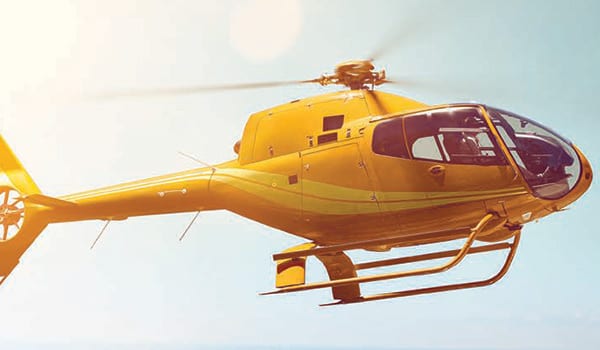Goals
- To create multipurpose and reliable test beds for increased testing capacity.
- To reduce development and maintenance costs of testing procedures.
- To enable the ability to modify or add to programs independent of the system integrator.
Challenges
- Replacing the existing system with a single, easy-to-use solution for
supervising test beds and logistics. - Creating an open and extensible system which can interface seamlessly with
additional testing installations. - Deploying the new solution without jeopardizing the functionality of the overall testing centre.
Results
- The facilities testing development time was cut in half, from 600 to 800 hours to 300 to 400 hours, and will continue to decrease as the system evolves.
- The company achieved real-time data archiving and processing.
- Creation of a scalable platform can easily evolve with the needs of testing centre.
- System Platform delivers 40% efficiency gains by eliminating the need for scripting or customization, and leveraging reusable visualization.

``At the Airbus Helicopter Marignane production site, test parameters have been created to reproduce conditions similar to those experienced during a real flight to check the conformity of components critical to the operation of the helicopter. During testing, which ranges from two hours to several hundred continuous hours, the gearboxes are subjected to extreme temperatures and conditions. This is an essential testing stage and part of the overall certification process.`` - David Asciutto, Manager of the Test Centre of Airbus Helicopters
Airbus Helicopter Chooses AVEVA Solutions for Equipment Testing and Certification Processes
Marignane (Bouches-du-Rhône), France – Since its founding in 1992, Airbus Helicopter has been responsible for many technology “firsts” in the development of military, commercial, emergency service and private helicopters. Located along the southern coast of France, Airbus Helicopter counts more than 12,000 helicopters in service with over 3,000 customers in more than 150 countries.
Combining speed and flexibility, helicopters are a popular means of transport, but their maintenance and operational costs are high, including the need to meet safety requirements. Therefore, before being put into service, all mechanical parts, in particular transmission systems, are meticulously tested with exacting methods designed to meet stringent benchmark and flight measurement requirements.
To maintain the leadership position it has earned over the last 25 years, Airbus Helicopter required a robust software platform and process applications to accurately and efficiently operate its product testing benches. The company put its trust in AVEVA.
``With these new, more advanced testing protocols in place, our team was able to use automated processes to test critical components of the EC225 and EC175 helicopter models. Previously, we used a separate test method for each type of MGB, which resulted in high development costs due to the need to create custom benchmark and infrastructure programs.`` - Jean-Michel Pampuk, Automation Specialist at the test centre
Moving Towards a New Generation of Testing Protocols
Most helicopters are designed using a collection of critical mechanical components which work together to transfer the power of the engine to the main rotor and tail rotor. These feature several gearboxes including the main gearbox (MGB), the intermediate gearbox (IGB) and the tail rotor gearbox (TGB).
In 2006, the Airbus Helicopters testing centre invested in automated technology to replace manual testing processes, with the first multipurpose, multi-version benchmark testing method established in 2007.
Choosing an Open, Reliable and Scalable Solution
In 2011, the company commissioned a second equipment testing bench featuring a more scalable and customizable software program to enhance the new testing procedures.
As it turned out, the team found it was quite a challenge to identify a system that combined the simplicity and robustness needed to manage Airbus Helicopter’s extremely complex testing protocols. However, System Platform offered the comprehensive functionality needed by the project team, and entrusted the project to Cofely Ineo, Groupe GDF SUEZ, an AVEVA systems and services integrator.
An open architecture was equally important to enable the integration of specific functions when needed by the team. Object-oriented programming and strong reporting functions were other assets which played roles in the team selecting System Platform.
System Platform leverages information technologies and provides process automation to enable visibility of processes, manage compliance and enhance operational efficiency, all in real-time. As a complete automation solution, System Platform can deliver 40% efficiency gains by eliminating the need for scripting or customization, and leveraging reusable visualizations.
In addition, System Platform is the world’s only responsive, scalable platform for Supervisory, SCADA, MES and IIoT applications that integrates the process with the overall enterprise. By providing a collaborative, standards-based foundation, the solution unifies team members, processes and assets for continuous operational improvement and real-time decision support capabilities.
``Over time we realized that the supervisory software program in place for Bench 1 testing did not meet all of our requirements. We found that when our team wanted to modify a program or add new functions, it was necessary to call in our suppliers. This cost us time and money due to the subsequent delay in conducting equipment testing. That is when we realized during the planning process of our second test bench, that we needed a scalable, open architecture solution, capable of catering to all our evolving needs. The new solution also had to be flexible so that we could add different test parameters when necessary. Several criteria were decisive in choosing the software solution for the new Bench test, starting with a solid partnership with Microsoft. We have PCs running Windows and wanted a standard supervisory system which could adapt to evolutions in Microsoft software. Therefore, it was important for us to use a software and integrator team that had direct links to Microsoft. System Platform enables our teams to make better decisions in real-time, operate equipment more efficiently and collaborate more effectively across all departments.`` - David Asciutto, Manager of the Test Centre of Airbus Helicopters
Implementation of Testing Benchmarks and Logistics
In addition to creating a second testing bench, the team also needed to retrofit Bench 1 and update the entire logistics procedure.
During this phase, Bench 1 was still functioning on the old system, therefore, the first step was to integrate the development of supervisory and control screens, as well as create a library of object components for distributed applications by implementing InTouch HMI.
With the implementation of InTouch HMI, the team at Airbus Helicopters can access a wide range of graphical symbols that are configurable to address all the industrial processes, and at the same time reduce development and maintenance costs.
InTouch HMI is an open and extensible Supervisory HMI and SCADA solution that enables the rapid creation of standardized, reusable visualization applications for deployment across the entire enterprise. InTouch HMI software delivers business value in engineering simplicity, operational agility and real-time performance. This helps drive maximum performance, lowers costs, and provides additional security and reduced risk.
With InTouch HMI, real-time visibility into testing processes is enhanced. This results in improved operator effectiveness and increased control of processes to simplify and enforce standardization and change management.

``The stakes were high with the goal to create a common supervisory platform for both test benches to carry out all configurations of tests on the MGBs. First, we created command control for Bench 2 by installing the System Platform supervisory software on a new server. Information relating to data acquisition and test controls was then uploaded into the new system. We developed standard functions that are identical on both Benches 1 and 2, making it possible to exchange scenarios between them, as well as increase the test capacity. Finally, the logistics system enables the team to prepare the MGBs and adaptation boxes for testing, and transfer them onto the test bench.`` - Pascal Bergé, Operations Manager at Ineo PACA, a division of Cofely Ineo
A Customized Functional Architecture
Today, System Platform makes it possible to manage reception and development testing of most MGBs manufactured in the Marignane facility. Designed to account for every step of a specific testing procedure, System Platform architecture is deployed on three servers and a logistics client. In addition, the control room houses two servers to manage acquisition and supervisory data from Benches 1 and 2.
One screen shows spark lines and alarms, while another screen enables the team to follow the current test in real-time, thanks to cameras mounted on each test bench.
To ensure precise and comprehensive acquisition of all critical data needed for testing, Airbus Helicopter implemented Historian and Historian Clients. Historian is a large-volume plant data historian that unites a high-speed data acquisition and storage system with a traditional relational database management system. This facilitates easy access to plant data using open database standards.
Historian combines advanced data storage and compression techniques with an industry-standard query interface to ensure open and easy access to stored time-series information. This enables process and production decisions to be evaluated and made in real-time by Airbus Helicopter testing operators.
To gain better visibility into its operations processes, the company also installed Historian Clients, which generates real-time and historical data charts and reports directly from the Historian. This allows operators, engineers and decision makers to quickly visualize what is happening during the testing process.
In the preparation and assembly hall, the logistics client features a single screen which displays control and command of logistics residing on a PLC via a local ethernet network. The PLCs collect field information generated by the equipment (main engine, pumps, valves, etc.), and transmits this data in real-time to supervision, which then launches piloting requests. Finally, a third server, shared between both test benches and logistics, manages the archiving of process, alarms and event data in real-time via Historian.
All the information recorded during the test is stored, providing total traceability and comprehensive diagnostic capabilities.
``The flexibility of the test benches is made possible thanks to adaptation boxes that are specific to each MGB version. In addition, each has two screens, with numerous HMIs so that tests can be conducted safely and accurately.`` - Jean-Michel Pampuk, Automation Specialist at the test centre
``Whichever bench is in use, the interface is the same for the operator and the logistics control system is much more intuitive. The best part is that it requires minimal training to move from one to the other.`` - David Asciutto, Manager of the Test Centre of Airbus Helicopters
Achieving Development and Maintenance Savings
The new system, with its intuitive interface and simplified, ergonomic display, greatly enhances the work of the operators. Airbus Helicopters now has a robust IT resource enabling it to manage different tests in parallel with approximately 200 test scenarios at its disposal. Finally, development and integration time and costs were significantly optimized with the implementation of the new AVEVA software solutions.
Progressive Optimization
All the possibilities of System Platform have yet to be leveraged and continue to emerge. Airbus Helicopters plans to take advantage of all the capabilities it has to offer, and optimize its use gradually, according to the needs of the test centre.
System Platform also opens future possibilities for the Airbus Helicopters team to access testing data and protocols, as well as other company processes via tablets or smartphones. Enabling the entire organization to transition to a mobile workforce when necessary.
With AVEVA software, Airbus Helicopters has harnessed the power of a global supervisory system that centralizes all sensitive information for easy access and sharing, as well as making it possible to trace the organization’s critical operations and safety testing processes.

``We have created three test benches in four years. Throughout the project the solution has been constantly adjusted and fine-tuned to address specific industrial requirements of Airbus Helicopters. It was true partnership between our team, AVEVA and Cofely Ineo. By implementing AVEVA software solutions, the time required to configure the IGB/TGB Bench, was cut in half. And as the systems evolve, these gains will increase. The system’s communication protocols has so much potential to evolve and grow. Today we have approximately 5,000 variables that include measurements of pressure, temperature, speed, and stress. In the future, we plan to add sensors to collect more precise information within the same application, extending the ROI of our initial implementation.`` - Pascal Bergé, Operations Manager at Ineo PACA, a division of Cofely Ineo